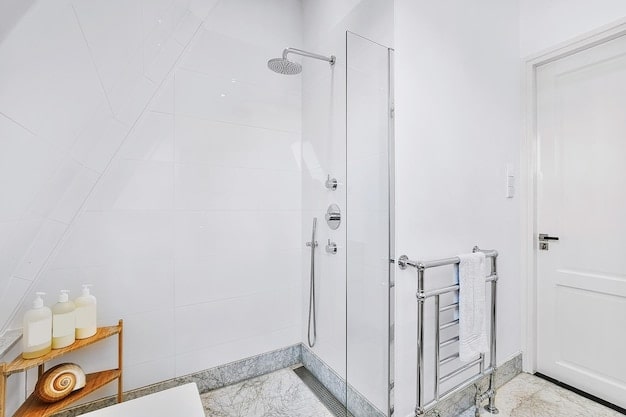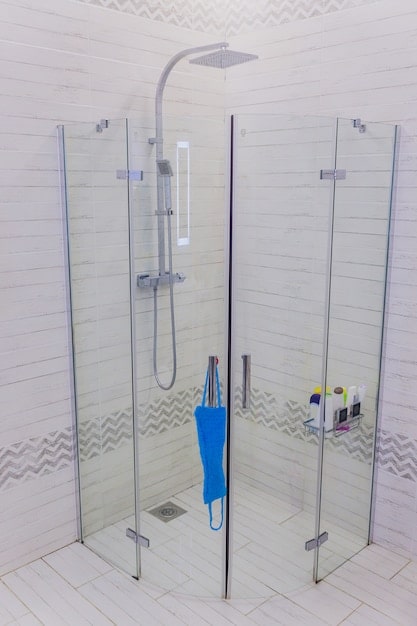Walk in showers and wet rooms have become increasingly popular bathroom solutions in modern homes. Unlike traditional tub or shower enclosures, these designs feature open layouts and easy accessibility. Both walk in showers and wet rooms allow for barrier-free entry and exit, making them ideal for users of all ages and abilities.
With customizable designs and luxury features like rainfall showerheads and bench seating, it’s no wonder why homeowners are drawn to these stylish yet functional bathroom additions. This comprehensive guide will explain the key differences between walk in showers UK and wet rooms, outline the benefits of each, and provide tips for choosing and installing your perfect modern shower space.
What is a Walk in Shower?

A walk in shower is an open-access shower enclosure without any doors or curtains obstructing entry or exit. The shower area features a level entry and is surrounded by waterproof walls and flooring to contain water spray. Unlike a bathtub/shower combo, a dedicated walk in shower does not require stepping over a high wall or threshold to enter. This makes walk in showers extremely accessible, especially for those with limited mobility.
Modern designs incorporate grab bars, benches, and non-slip floor tiles for added safety and convenience as well. The open layout also creates an airier, more spacious feel. Custom sizes, showerheads, finishes, and accessories like body sprays allow for customization to suit any bathroom aesthetic.
What is a Wet Room?

A wet room is a waterproof bathroom with an open shower area, much like a walk in shower. However, instead of containing water only in the dedicated showering space, the entire bathroom floor is sloped and lined with waterproof membranes. An open shower area or simply a shower screen separates the toilet/sink area from the “wet zone”, where water flows straight to a floor drain.
This allows for a seamless visual design and flexibility in showering space. The modern, spa-like feel of wet rooms enhances the luxury bathroom experience; there are no shower doors, curtains, or containment walls obstructing movement or views. Superior waterproofing is important for wet rooms to prevent leaks and moisture damage. Along with that, you should also get a proper shower screen for wet rom. When designed correctly, wet rooms are just as accessible and user-friendly as walk in showers.
Key Differences Between Walk in Showers and Wet Rooms

While walk in showers and wet rooms share similarities like barrier-free entry and open layouts, some key differences impact their design and installation. Walk in showers UK have defined showering areas with containment walls, allowing for targeted waterproofing and drainage. Wet rooms require full room waterproofing and sufficient drainage capacity to handle greater water volume across more surface area.
Wet rooms also demand careful lighting design to prevent shadows or dark spaces, unlike walk in showers contained in one brighter zone. Lastly, potential splashing and higher humidity in wet rooms call for moisture-resistant finishing and fixtures.
In terms of customization, walk in showers allow for more flexibility in size, layout, accessories, and finishes. Wet rooms have greater constraints since the entire space serves as one cohesive shower zone. Wet rooms also have higher installation and maintenance costs due to expansive waterproofing needs. However, they provide superior accessibility and design continuity for a seamless, spa-like bathroom.
Benefits of Walk in Showers
As an accessible and customizable shower solution, walk in showers offer numerous practical and aesthetic benefits. Here are some of the most prominent benefits of a walk in bath shower.
- Accessibility and Safety
With no doors or lips to step over, walk in showers allow easy access for all users, including seniors and those with disabilities. Optional accessories like grab bars, benches, and slip-resistant tiles also boost safety.
- Design Flexibility
Defined shower zones allow for great variety in layout, size, finishes, and accessories to complement any bathroom style. From sleek modern to classic antique, walk ins can fit any aesthetic.
- Space Savings
Without a bulky tub taking up space, walk in showers allow for spacious stalls even in modest bathrooms. This makes them well-suited for small powder rooms and master suites alike.
- Low Maintenance
With contained shower areas that are easy to clean and maintain, walk in showers require less effort than traditional options. Their waterproof construction also prevents leaks and water damage.
Benefits of Wet Rooms

While similar to walk in showers in terms of accessibility and design flexibility, wet rooms offer their own set of advantages:
- Universal Accessibility
With no containment walls or thresholds, wet rooms allow uninhibited movement for wheelchair users, elderly occupants, and those with physical limitations.
- Indulgent Appeal
The ultra-modern, spa-like environment transforms ordinary bathrooms into relaxing oases. Open views and space for amenities like fireplaces or artwork create lavish style. You just need to be extra careful with the wet room shower screen you select.
- Design Continuity
Unbroken lines and surfaces allow for a continuous visual design without disjointed shower spaces interfering. The harmony between “dry” and “wet” zones looks clean and sleek.
- Space Efficiency
By merging showering and other functional areas, wet rooms maximize usable square footage, perfect especially in tight spaces.
- Property Value Boost
As impressive, high-end features, wet rooms can increase a home’s market value beyond the cost of installation.
Choosing the Right Shower Screen for Your Wet Room

Installing a proper shower screen is imperative for wet rooms to contain water in the designated wet zone and protect the rest of the bathroom. Here are the most prominent factors to consider when getting a shower screen for wet room.
- Height/Coverage Area
Taller screens reaching 8 feet or more prevent splashing while shorter options save costs. Ensure full coverage across the shower zone.
- Frame Material
Slimline aluminum frames suit modern aesthetics while chrome/stainless steel adds a sleek hotel-style look. Clean, minimize visual breaks.
- Glass Type
Opt for safety/tempered glass. Laminated options prevent shining through. Add textured patterns for visual interest and an obscured view.
- Pivot vs. Hinged
A pivot wet room shower screen allows easy access without swinging out into room. Hinged versions take up less space when open but require clearance.
- Ease of Cleaning
Channels for squeegee hooks, glass coatings that prevent scaling/soap buildup, and squeegee/cloths included make maintenance simple.
Installation Considerations
Professional installation is highly recommended for walk in showers and especially wet rooms due to complex waterproofing requirements and finishing work involved. However, DIY is possible for those with expertise. Key factors to weigh include:
- Space & Layout
Consider existing bathroom size and layout when planning walk in vs. wet room to allow proper clearances and door swings.
- Waterproofing
Full-room waterproof membranes in wet rooms complicate installation. Ensure adequate slope to drains as well.
- Accessible Features
Include blocking to support grab bars, non-slip flooring, and adequate maneuvering clearances.
- Materials Selection
Choose water-resistant surfaces like tile, solid surfaces, or treated wood. Use moisture-proof trims.
- Permits & Codes
Wet room drainage/waterproofing must meet plumbing codes. Ensure all requirements are met.
Cost Comparison

Walk in Showers vs. Wet Rooms While specific costs vary based on size, materials, and accessories selected, the expansive waterproofing in wet rooms makes them a more expensive investment:
Walk in Shower Costs:
- Basic Equipment & Installation: £2,000 - £5,000+
- Upscale Finish Materials: £3,000 - £7,000+
Wet Room Costs:
- Basic Equipment & Waterproofing: £5,000 - £10,000+
- Upscale Tiling & Finishes: £8,000 - £15,000+
Common cost influences include:
- Size/Coverage Area: Larger showers require more extensive waterproofing and materials.
- Drainage Needs: More complex drainage and sloping increases labor and material expenses.
- Accessories: Add-ons like rainfall showerheads, body sprays, or benches add cost.
- Surfacing Materials: Natural stone tiles or finishes will cost more than ceramic.
FAQs about Walk in Shower and Wet Room
What is the difference between a walk in shower and a wet room?
A walk in shower has contained showering areas while wet rooms feature full room waterproofing for an open concept bathing space.
Are walk in showers suitable for small bathrooms?
Yes, without bulky tubs taking up space, walk in showers maximize usable square footage. Thoughtful layouts work even in modest powder rooms.
How do I maintain a wet room?
Use water-resistant materials, routinely clean/disinfect all surfaces, unclog drains, and squeegee the floor after each use to control moisture.
Can I install a walk in shower myself?
With expertise in tiling, plumbing, waterproofing and finish carpentry, it’s possible. However, professional installation gives the best results.
What type of flooring is best for a wet room?
Tile, solid surfacing, or treated composite floors that resist water and meet safety codes are best. Ensure proper drainage slope as well.
The Final Words
Modernizing a dated bathroom with an accessible, inviting walk in shower or luxurious wet room can enhance both comfort and home value. Built correctly, walk in and wet room showers promise safety, relaxation and everyday ease for all users in sleek, contemporary styles. If you are looking forward to getting walk in shower enclosures or wet room screens, feel free to visit Elegant Showers today. It is the most trusted place in the UK for anyone to buy bathroom accessories.














Validate your login